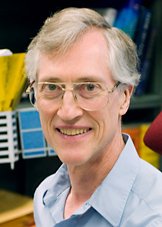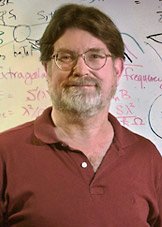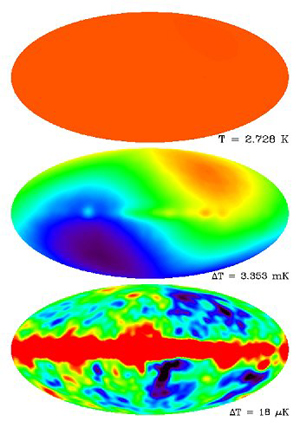This year’s Nobel Prize for Physics cuts right to the chase, to one of the biggest questions that has vexed humanity ever since we first pondered the world around us – Where did we come from? In 1989, NASA launched a satellite to try and provide an answer. The COBE satellite would measure the background radiation, the microwave relics of the Big Bang that started it all and give us a glimpse at our very beginnings.
As part of a 1500 strong research team, the new Nobel physicists, John Mather of the NASA Goddard Space Flight Center, in Greenbelt, Maryland, and George Smoot of the University of California, Berkeley, used the readings from COBE to look back at the infancy of the Universe to learn how stars and galaxies were first formed.

Dr John C Mather (credit NASA)
A mere 380,000 years after the Big Bang, not even a blink of the eye given that the Universe is almost 14 billion years old, it had cooled sufficiently for photons to separate, or decouple, from matter. At this time the Universe was much hotter than it is today, but these photons travelling through ever-expanding space read just 2.7 degrees above absolute zero on COBE’s cosmic thermometer.
COBE also observed smallest variations in this temperature in different directions throughout the Universe. These differences of just a hundredth of a degree in the cosmic background radiation offer an important clue as to how the first galaxies formed and are reflected in the iconic image pasted on the covers of dozens of newspapers and magazines the world over when Smoot and his colleagues broke the news that they had a picture from the dawn of spacetime. These temperature variations reveal how matter began to aggregate, a process that ultimately led to stars and planets, the galaxies and eventually sentient life on Earth that would billions of years later ponder its own existence.

Professor George Smoot (credit Berkeley)
The success of COBE was the outcome of prodigious teamwork coordinated by Mather. Smoot’s main responsibility was to measure those tiny variations in temperature across the cosmos. The pair will share the 10m Swedish Krona (£0.72m, $1.4m) prize money.

Cosmic background
Further reading
Advanced information on the 2006 physics Nobel prize
http://nobelprize.org/nobel_prizes/physics/laureates/2006/phyadv06.pdf
Dr. John C. Mather
http://astrophysics.gsfc.nasa.gov/staff/CVs/John.Mather/
Professor George Smoot
http://aether.lbl.gov/personnel/smoot.html
Suggested searches
cosmic microwave background
Big Bang
star formation